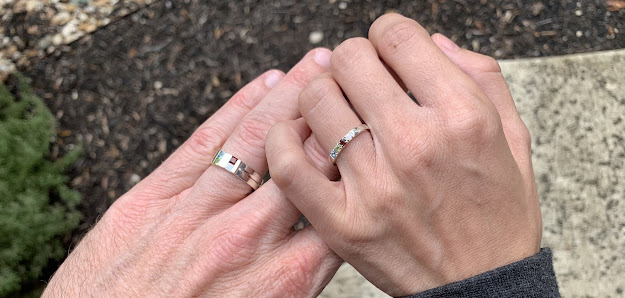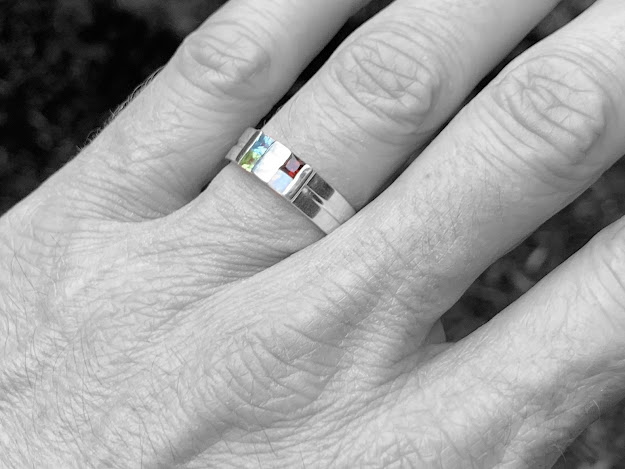"But I hate pumpkins," you say.
You very well might, but I'm not convinced yet. Hear me out.
We'll begin by defining what a pumpkin is. A pumpkin is not a Starbuck's pumpkin spice latte, which happens to cost a small fortune ($5.75). Nor is it the pumpkin pie from your local grocer that's sold for a song ($4.10). It's okay if you thought it was. I'm willing to bet that most of the people on my side, wearing merchandise touting "pumpkin spice everything" and "you had me at pumpkin spice," made the same mistake. They just happen to like those two things.
No, a pumpkin is a winter squash, and a squash is a fruit. The type of fruit is a berry and the type of berry is a pepo, but I'm not a botanist so we'll stop that business right there. In the US, our most common winter squashes are butternut squashes, acorn squashes, and spaghetti squashes.* Chances are, if you don't hate those, you probably don't hate pumpkins.
Summer squashes are sold year round, and winter squashes are sold from late summer through the winter. You see, these pepos were named a long time ago, and vegetables that could keep until the winter without spoiling deserved special recognition. Summer squashes mature more quickly than winter squashes, and the most common one here is the zucchini. In New Zealand and Australia, all winter squashes are called pumpkins, so they roast butternut pumpkins and acorn pumpkins. And if you think you like butternut pumpkins and acorn pumpkins, which have nothing to do with those dreadfully common pumpkin pies, you can probably guess what I'm about to say next. Canned pumpkin purée, which is what's behind the vast majority of those pies, is made from a variety of winter squashes. But this is not to say, "Oh no! Libby has lied to us!" If that's what you're thinking, pish posh. Libby was just acting Australian.
Pie pumpkins, also called sugar pumpkins or sweet pumpkins, are the pumpkins normally used in cooking. If there was one year that you never got around to carving your jack-o-lantern pumpkin, also known as a Connecticut field pumpkin, and you threw it into the oven, the result would have been edible, but your dinner would have been fairly watery, stringy, and flavorless. And if you had judged all pumpkins on that experience, you might just need a few more data points. Easily corrected.
Sometimes, people say that they hate pumpkins because the insides are slimy. If you find yourself nodding in agreement, do you hate cantaloupe and honeydew for the same reason? Or instead, do you willingly slice your tomatoes and spread raw slimy bits of fruit all over your BLTs without a second thought? For what it's worth, nobody eats the slimy parts of the pumpkin. Once a pumpkin is roasted, the stringy bits scoop away as easy as pie. If you're grossed out by the sliminess in a pumpkin but don't go out of your way to pick the tomatoes off of your cheeseburgers, look straight through your excuses and peer deeply into your heart.
"But I hate pumpkin pie spice," you probably didn't say. So let's talk about that, too.
Pumpkin pie spice is mostly cinnamon. It's almost always a blend of five spices, which are cinnamon, ginger, nutmeg, allspice, and cloves. Less frequent players borrowed from the mulling spice world are citrus rind, cardamom, and peppercorns. If you put some variety of these spices together, you will not get a Starbucks pumpkin spice latte. It's quite the reverse; Starbucks tried to imitate winter squash and these warming spices in a mass produced way, and they came up with something thick and orange. It made money, so it's here for everybody that loves it and everybody that doesn't. If you don't like pumpkin spice lattes and all the other pumpkin spiced shelf stable products on the supermarket shelves, this does not mean you don't like pumpkin pie spice.
While sugar can help to bring out many of these flavors, there's nothing about this blend that prevents it from being perfectly suitable for savory cooking. Many Moroccan spice blends use several of these ingredients.
Cinnamon is from the inner bark of Cinnamomum trees. There is one kind of tree, the Cinnamomum verum, which is sometimes considered to be the only source of true cinnamon, and I don't know if I've ever had it. Am I making this up? It certainly sounds like a children's story.
Ginger is a spicy root, and I think it's better when it's not dried. If you can juice a piece or even boil some to make a ginger tea to replace the water in a recipe, you'll get a much punchier team player.
Nutmeg is a big seed that's ground into a powder. It's nutty and woody. Purists will insist on using only freshly ground nutmeg to eliminate cheaper additives, but if you only have so much time, I'd recommend spending it on the ginger.
Allspice is a dried unripened berry that's ground into a powder. Each berry looks like a giant brown peppercorn. They're named for their flavor, which resembles cinnamon, nutmeg, and cloves, and they are very charming.
Cloves are the flower buds from clove trees. They're the strongest of the five; while ground cloves are on the pricy side, a little bit goes a long way.
I grew up wearing itchy lacy dresses to Easter services, which are held in the only hour of the year in which adults pretend they believe a man came back from the dead. Add pollen and dreary rain to the mix with a mascot that's a giant rodent dressed in pastels whose claim to fame is the ability to madly reproduce, and it's no wonder I think spring is gross. The real question is, why don't you?
The summer air is thick and heavy. Smelling of rotting carcasses and mold, it is eager to engulf our lethargic sweaty bodies until we feel we're nearly decaying ourselves. Each summer, as you make an effort to enjoy the great outdoors, you will inevitably be hit over the head by a sense of festering sewage. Summer is a reminder that our beautiful blue marble is, in fact, made of excrement.
And then everything changes.
The leaves start to die. Through their transformation, with their sacrifice, a magnificent array of colors explodes onto the trees and drifts down to carpet what's left of summer. They perfume the air as it cools. Marking a new academic year, the changing of seasons presents a new beginning and a fresh start. The relief from the oppressive heat is a reminder to us all to wake up and enjoy the lives we've been given. And right on cue, what arrives in every corner of our stores? On your neighbor's doorsteps? On every seasonal menu? So vibrantly beautiful, so diverse, and even more charming than allspice, our wealth of hearty winter squashes are on display for all to see. Surely, only something so undeniably un-hatable deserves all that attention.
If you've made it this far and you still hate pumpkins, I am sorry to have failed you. But don't worry; they'll be moved aside to make way for your car's reindeer antlers in no time.** If, however, you're willing to reconsider your stance, then let's celebrate together. Move over, Easter. It's time for the real candy.
* While "squash" is a perfectly acceptable plural form of the word, "squash," I shall continue writing "squashes" four times in one sentence when the opportunity presents itself.
**Although you are correct in assuming that I am making fun of you, I must confess to also own car reindeer antlers, and mine are sparkly.





